Why is Multilingual Website Design Crucial for Your Business?

In today’s world where geographical boundaries have lost their meaning in cyberspace, reaching global audiences has become more important than ever.
#Multilingual_website_design is no longer a competitive advantage, but an unavoidable necessity for businesses seeking sustainable growth and development.
By providing your website content in different languages, you will be able to communicate with a wider range of audiences and pave the way for accessing the global market.
This approach not only increases the trust and satisfaction of international users but also significantly helps improve your ranking in search engines for various keywords in different languages.
Digital marketing in the current era will lose a large part of its potential without considering the multilingual aspect.
Let’s imagine how a website only available in Persian can have effective interaction with a user in Germany or Japan? The answer is clear: this interaction will be very limited.
Therefore, implementing a multilingual website is not only a strategic decision but also a long-term investment in your global success.
This process brings countless benefits, from increasing site traffic to improving conversion rates and creating stronger branding in foreign markets.
This is an analytical and explanatory step to demonstrate importance.
Does your company’s website create a professional and lasting first impression on potential customers? Rasaw, with professional corporate website design, not only represents your brand’s credibility but also opens a path for your business growth.
✅ Creates a powerful and reliable brand image
✅ Attracts target customers and increases sales
⚡ Get free consultation
Key Considerations in Multilingual Website Architecture and Implementation
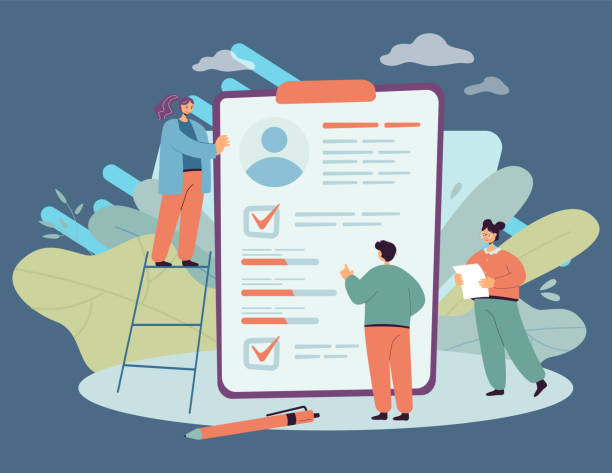
When it comes to multilingual website design, technical and website architecture issues play a vital role.
Choosing the appropriate URL structure is one of the first and most important decisions.
Should subdomains (like en.example.com), subdirectories (like example.com/en/), or country-code top-level domains (like example.de) be used? Each of these options has its own advantages and disadvantages in terms of SEO and management.
For example, subdirectories are usually stronger in terms of internal SEO because they inherit the main domain’s authority, while top-level domains clearly specify the target geographical location.
Additionally, the correct use of hreflang tags is essential for search engines to display the correct language version of the website to users in different regions.
These tags help Google and other search engines recognize duplicate content and specify the appropriate language version for each searcher.
Content management in a multilingual system also requires special attention; from selecting a suitable Content Management System (CMS) that supports multilingual capabilities to designing a database that allows easy storage and retrieval of translated content.
These aspects are presented technically and guidance-oriented for successful implementation of a multilingual site.
Content Translation and Localization Strategies for Global Success

In the multilingual website design process, the quality of content translation is of paramount importance.
Merely translating words is not enough; content must be localized to match the culture and values of the target audience in each language.
This includes paying attention to local idioms, currencies, dates, and even tone and writing style.
Two main approaches for translation exist: human translation and machine translation.
Human translation, although more costly and time-consuming, offers much higher accuracy and fluency and is capable of understanding and conveying cultural and tonal nuances.
In contrast, machine translation is faster and cheaper, but may have grammatical and semantic errors and may not achieve sufficient localization.
For important and strategic content, it is recommended to use professional human translation, while for less important or internal content, machine translation can be used as a supplementary tool.
Choosing the right translation strategy not only affects the quality of your content but also directly impacts user experience and your brand’s credibility in international markets.
This educational and explanatory section helps you make the best decision for your multilingual website.
| Feature | Human Translation | Machine Translation |
|---|---|---|
| Accuracy and Quality | High (with deep understanding of content and culture) | Variable (depends on text complexity and technology) |
| Speed | Low (time-consuming for high volume) | High (instant for any volume) |
| Cost | High (per word or hour) | Low (usually free or subscription-based) |
| Localization and Cultural Nuances | Excellent (understanding tone, idioms, and culture) | Weak (literal translation and lack of context understanding) |
| Suitable for | Sensitive, marketing, legal, medical content | Internal content, non-sensitive texts, quick translation |
The Importance of Technical SEO in Multilingual Website Design
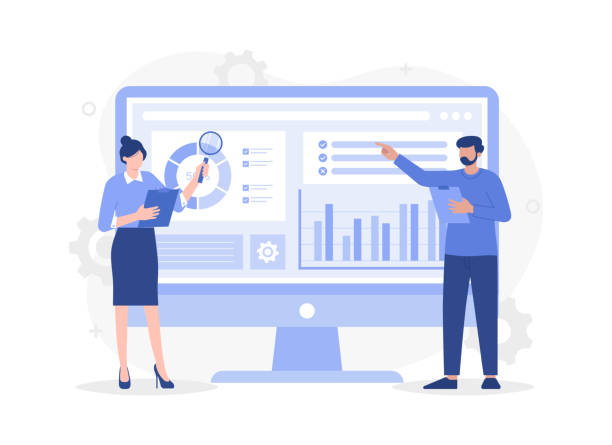
For your multilingual website to perform optimally in search engines, adhering to the principles of international SEO is highly important.
This goes beyond merely translating keywords.
Search engines have complex algorithms to provide results relevant to the user’s language and location.
The hreflang tag, mentioned earlier, plays a vital role in guiding search engines to the correct version of the content.
Without these tags, search engines might consider your translated content as duplicate content and reduce your ranking.
Additionally, separate sitemaps should be created for each language and correctly registered in Google Search Console.
Specifying geo-targeting in webmaster tools can also help search engines understand which geographical region or language each version of your website targets.
Finally, site loading speed and its responsiveness on various devices, especially for international users who may not have access to high-speed internet, become doubly important.
These technical and guidance-oriented tips are crucial for any multilingual website design.
Does your current corporate website present a worthy image of your brand and attract new customers?
If not, transform this challenge into an opportunity with Rasaw’s professional corporate website design services.
✅ Significantly improves your brand’s credibility and image.
✅ Paves the way for attracting new leads and customers.
⚡ Contact Rasaw now for a free and expert consultation!
User Experience and User Interface in Multilingual Websites

A successful multilingual website design must also provide a flawless user experience (UX) and user interface (UI).
Users should easily be able to select their preferred language and switch between different languages.
Placing a language switcher in a prominent and accessible location, such as the site’s header or footer, is very important.
This switcher should be accompanied by standard language codes (e.g., EN, ES, FA) or country flags so users can immediately identify their desired language.
Also, it must be ensured that the website’s visual design remains consistent across all languages and that page layouts are correctly adjusted according to the language’s writing direction (e.g., right-to-left for Persian or Arabic).
Error messages, forms, and any other interactive elements must also be fully translated and localized so that the user does not feel confused at any stage.
The ultimate goal is for every user, regardless of their language, to have a smooth and pleasant experience with your website.
This engaging and explanatory approach highlights the importance of user-centricity in multilingual projects.
Common Challenges and Solutions in Multilingual Development
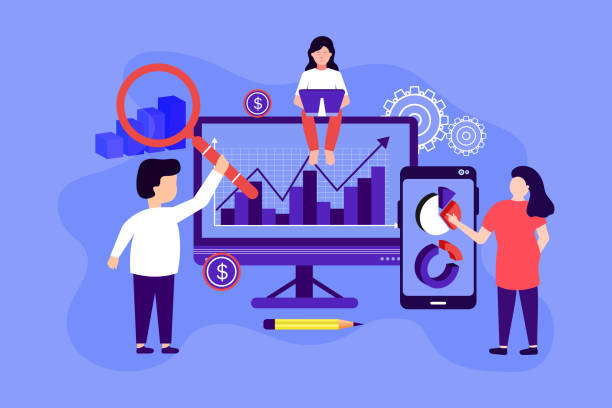
Developing a multilingual website is not without its challenges.
One of the biggest challenges is the continuous management and updating of content in multiple languages.
Every time new content is added or existing content is changed, it must be ensured that these changes are also applied and translated in all language versions.
This can be time-consuming and requires careful coordination.
Another challenge is maintaining the integrity of the website’s design and functionality against language changes; for example, the length of words and sentences varies greatly in different languages and may cause page layout to be disrupted.
Also, technical support and responding to users in different languages can create complexities.
To overcome these challenges, using a powerful Content Management System (CMS) with native multilingual capabilities or dedicated plugins is recommended.
Also, establishing a transparent workflow for content translation and review, and considering flexibility in design to adapt to text lengths, can help solve these issues.
This section provides thought-provoking and technical content for anticipating and solving problems.
Useful Tools and Platforms for Multilingual Website Design
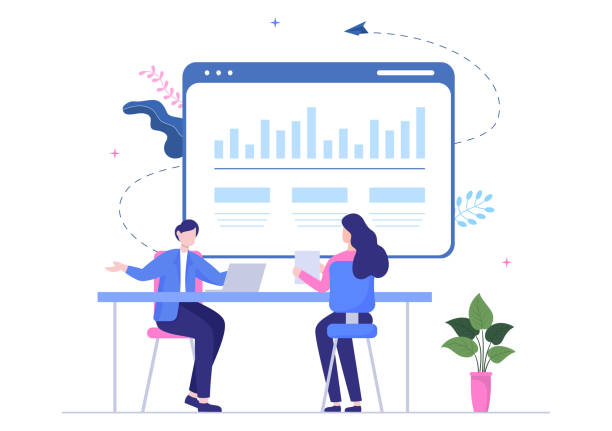
To facilitate the multilingual website design process, various tools and platforms are available, each offering its unique features.
Content Management Systems (CMS) like WordPress, Joomla, and Drupal are among the most popular options that enable the creation of multilingual websites using plugins or built-in functionalities.
For WordPress, plugins like WPML and Polylang are among the most commonly used, providing capabilities for translation management, multilingual SEO, and language switching.
Drupal natively offers strong multilingual support and is suitable for large and complex projects.
In addition to CMSs, specialized translation and multilingual content management platforms (TMS) also exist that optimize the translation process and workflow.
These tools can help you manage projects, collaborate with translators, and maintain translation quality at scale.
Choosing the right tool depends on your budget, project size, and technical needs.
This section, presented in an educational and technical manner, provides a comprehensive overview of available options.
| Feature | WordPress (with plugin) | Joomla | Drupal |
|---|---|---|---|
| Native Multilingual Support | Weak (requires powerful plugin) | Medium (good built-in features) | Excellent (powerful native features) |
| Ease of Use | High (with user-friendly plugins) | Medium | Low (requires more technical knowledge) |
| Plugin/Extension Cost | Variable (from free to premium) | Variable (from free to premium) | Low (most features are native and free) |
| International SEO Support | Good (with dedicated SEO plugins) | Medium | Excellent |
Measuring Success and Analyzing Multilingual Website Performance

After implementing and launching multilingual website design, the next crucial step is measuring performance and analyzing data for continuous improvement.
Analytics tools like Google Analytics allow you to track inbound traffic from each language, user behavior in each language version, bounce rate, time on site, and conversion rate.
By using filters and segments in Analytics, you can analyze the performance of each language separately and identify strengths and weaknesses.
For example, if the conversion rate in a specific language is lower than in other languages, it might indicate a need to improve translation, localization, or user experience in that language.
A/B testing in different language versions can also help you find the best titles, calls to action (CTAs), and layouts for each target market.
This analytical data forms the basis for informed decisions to optimize and enhance your multilingual website, serving as a practical guide for continuous improvement.
Are you dissatisfied with the low sales of your e-commerce site?
Rasaw is your solution for a professional and high-selling e-commerce site.
✅ Significant increase in sales and revenue
✅ Easy and pleasant shopping experience for customers
⚡ Get a free consultation from Rasaw now!
Future Trends in Multilingual Website Design and Globalization

The multilingual website design industry is rapidly evolving, with new trends emerging that are shaping the future of web globalization.
One of the most important trends is the significant advancement in Artificial Intelligence (AI) and machine learning in the field of translation.
Neural Machine Translation (NMT) systems are increasingly capable of producing more accurate and fluent translations that more closely resemble human translation.
These technologies can accelerate the initial translation process and reduce costs, although they still require human review and localization.
Also, the growing importance of voice search and smart assistants highlights the need to optimize content to answer voice queries in different languages.
Global accessibility is also a key trend focusing on designing multilingual websites to ensure that people with various disabilities can easily use content in any language.
These informative and analytical developments show how the digital future is moving towards smarter multilingual interactions.
The Impact of Multilingual Design on Business Growth and Return on Investment
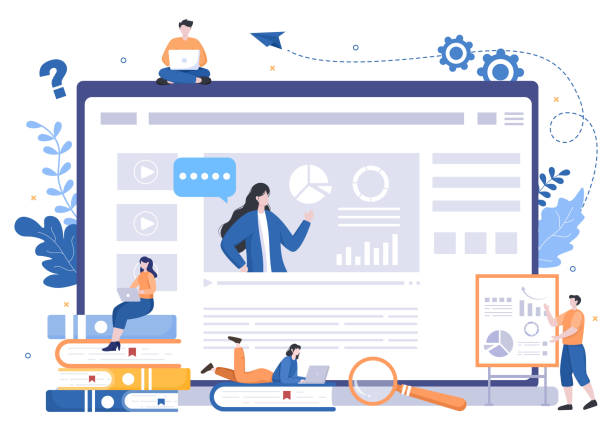
Ultimately, investing in multilingual website design should aim to increase Return on Investment (ROI) and business growth.
A multilingual website offers the potential to attract new customers from previously inaccessible markets.
This means increased traffic, leads, and ultimately, more sales.
With a strong presence in different languages, your brand is recognized as a global and customer-centric entity that respects the needs of its diverse audience.
This, in turn, helps strengthen brand credibility and trust at an international level.
In the long term, this strategy not only leads to market development and increased market share but also provides the opportunity to diversify revenue streams and reduce dependence on a specific market.
While initial implementation costs may be significant, its long-term benefits, including increased customer loyalty, geographical expansion, and sustainable growth, prove the value of this investment.
This explanatory and engaging section clearly demonstrates why designing a multilingual site is a smart decision for any ambitious business.
Frequently Asked Questions
| Question | Answer |
|---|---|
| 1. What is multilingual website design? | The process of creating a website whose content is available in several different languages so that users from all over the world can interact with the site in their own language. |
| 2. Why should we make our site multilingual? | To expand the market, attract international audiences, improve SEO in global search results, and increase brand credibility and professionalism. |
| 3. What are the methods for implementing a multilingual site? | Using subdomains (e.g., fa.example.com), subdirectories (e.g., example.com/fa/), URL parameters (e.g., example.com?lang=fa), or country domains (e.g., .ir, .de). |
| 4. Is multilingual site SEO different? | Yes, it requires international SEO strategies such as using hreflang tags, appropriate URL structure for each language, and keyword research for each language. |
| 5. What points should be considered when choosing languages? | Language selection should be based on target markets, audience demographics, and current website traffic analysis data. |
| 6. What are common problems in multilingual site design? | Problems related to SEO, translation quality, content management, right-to-left (RTL) and left-to-right (LTR) support, and user experience. |
| 7. What is the role of CMS in multilingual sites? | Modern Content Management Systems (CMS) (such as WordPress with multilingual plugins or Drupal) offer built-in features or powerful plugins for easy content management in multiple languages. |
| 8. How should content translation be done? | Translation should be done by native and professional translators, not just machine translation, to ensure tone, culture, and local idioms are respected. |
| 9. How is language switching done on multilingual sites? | Typically, a Language Switcher is used in the site’s header or footer, allowing users to easily select their preferred language. |
| 10. Is responsive design important for a multilingual site? | Yes, responsive design ensures that the site is displayed correctly on any device (mobile, tablet, desktop), which is crucial for international user access and SEO. |
And other services of Rasaw Advertising Agency in the field of advertising
- Smart Content Strategy: A new service to increase campaign management through dedicated programming.
- Smart Conversion Rate Optimization: A new service to increase website traffic through optimizing key pages.
- Smart Content Strategy: A fast and efficient solution for digital branding with a focus on intelligent data analysis.
- Smart Digital Advertising: Professional optimization for campaign management using dedicated programming.
- Smart SEO: A dedicated service for growth in customer behavior analysis based on Google advertising management.
And over hundreds of other services in the field of internet advertising, advertising consultation, and organizational solutions
Internet Advertising | Advertising Strategy | Advertorials
Sources
Benefits of Multilingual Website Design
International SEO Training
Expanding Business with a Multilingual Site
Smart and Modern Website Design
💡 For visibility and growth of your business in the digital world, Rasaw Afarin is your best companion. From professional WordPress website design to Search Engine Optimization (SEO) and intelligent social media management, we provide everything you need for your online brilliance with high expertise and experience. Let your business shine powerfully in the web space and achieve its high goals.
📍 Tehran, Mirdamad Street, next to Bank Markazi, Kazeroun Jonoubi Alley, Ramin Alley, No. 6

